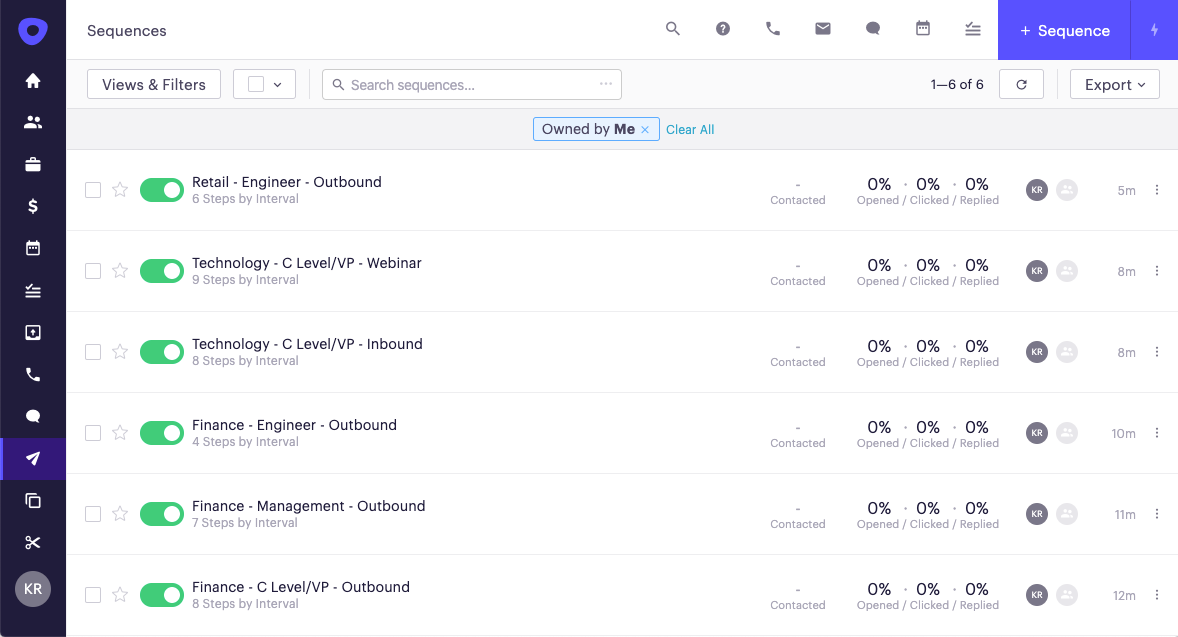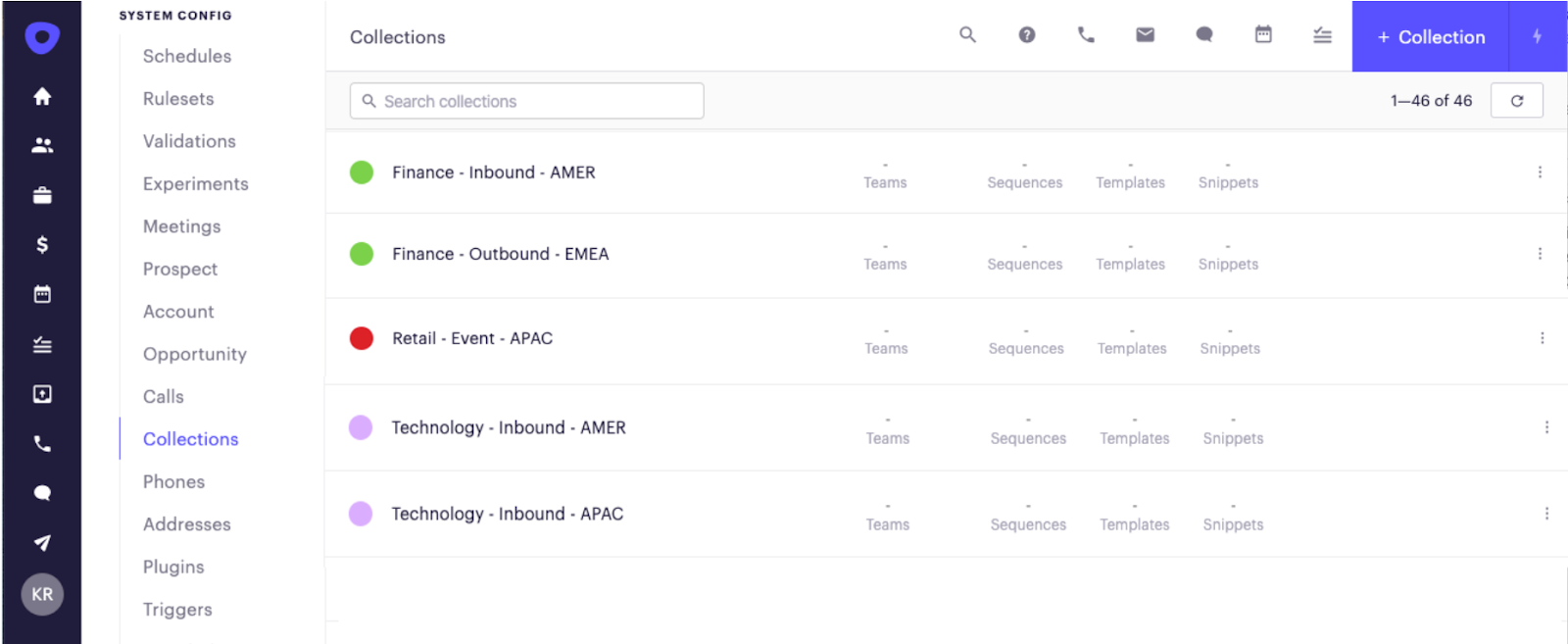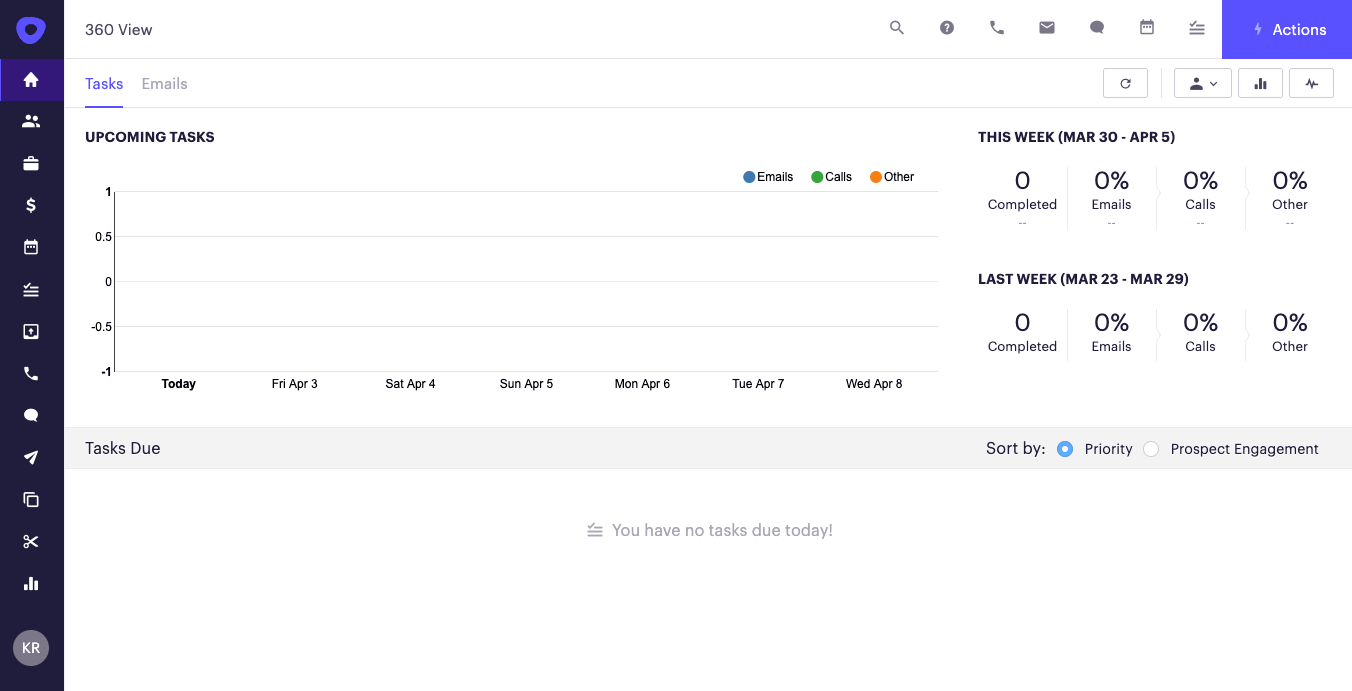Whether you’ve used Outreach for two months or two years, having organized content is vital to your bottom line.
When thinking about organizing content, my mind immediately goes to shopping. And in the content world, there are only two types of stores — thrift stores and department stores.
Think about it. You’re walking into a thrift store, and the entire place is filled with racks of clothing. There’s, at best, a minimum level of organization. It’s cheap, but you have to be willing to go rack-by-rack until you find what you need.
You can spend hours crafting the perfect message, but it goes to waste if reps can’t find it.
Now, picture yourself walking into a department store.
You’re immediately greeted with signs telling you where everything is. The shoe department is on floor 3. Men’s suits are on floor 2. The organization is flawless. With ease, you find your section, and all items are organized by style, color, and size. Finding exactly what you came for is quick and painless.
Now, think about the current state of your team’s content. Is it more of a thrift store or department store?
…more of a thrift store, right? Look, no judgment. I’m all about thrift stores! I am from Seattle after all (cue “Thrift Shop” by Macklemore). There’s a time and place for thrift shopping, but my 9-to-5 job isn’t one of them.
By organizing your content and making it easy to find, you’ll save reps at least 30 minutes a day, help improve prospect conversion rates, and significantly reduce new rep ramp time. So, let’s take a page out of retail’s book and talk about how to organize your content.

Create a standard naming convention
The first step in transforming your thrift shop into a well-organized department store is to create the foundation.
In other words, think about how you want the floors and aisles categorized. Will shoes be on a different floor than clothes? Will you separate men’s and women’s clothing? How will you label these sections?
Clean and uniform naming conventions across all content types — sequences, templates, and snippets will set this foundation.
Here are some tips to keep in mind when selecting a naming convention:
Select a max of three attributes to call out
When deciding your attributes, put yourself in your reps’ shoes. What do they look at on the prospect page when determining what messaging will be best received?
Some popular attributes to include are:
- Industry
- Persona
- Lead source
- Deal stage
- Company size
- Region
- Language
- Geographic location
- Product
Determine the formatting of your attributes
So you’ve selected your attributes. Now, determine what order they’ll appear in your naming convention.
An example of this could be: Industry – Persona – Lead Source. No matter the attributes and format you choose, stay consistent moving forward.

Now that you have the general layout of your store, you’re on your way to becoming the best department store in town. Nordstrom, step aside!
Assign content to the correct teams
Remember, content’s only useful if your reps can find it.
Since you’re creating a content department store, you’ll need clear signage that directs reps to the correct section. Luckily, Outreach has a specific feature for you to do just that – content collections.
These collections allow you to create folders specific to the intended team’s territory and/or job function.
Here is how to build out your collections:
1. Create your teams in Outreach
Before you can fully take advantage of your content collections, you must create your teams in Outreach.
Develop a naming convention using 1-2 attributes
Use the same process you did when creating a standard naming convention for content types. Think like a rep. What folders would make the most sense?
I recommend using similar attributes to what you previously used, Industry – Persona – Lead Source. Which attribute from this list are your reps most likely looking for when finding the appropriate messaging?
Pro tip: If you have a global team, choose one or two attributes related to the content and a third attribute identifying the geographic location of your teams. Remember, keeping attributes to a minimum will reduce clutter and enable reps to find content.

2. Create your content collections and assign them to your teams
Once you’ve settled on a naming convention, choose the content types associated with the collection and then assign your teams.
Pro tip: Only assign content types to the collection you plan to build content for. In other words, if you assign a collection to templates and sequences, make sure you have content from each to include.
3. Assign content to your content collections
Finally, assign your best pieces of content to your newly created collections. Forgetting this crucial step would be like sending shoppers to a section of your store with empty racks.
You now have a beautifully organized department store, but what’s next? It’s time to let your reps know about the grand opening!
Enable your teams to use the content
Without announcing your grand opening, your content will be useless, and you’ll be left with a well-categorized yet empty store. Your last step is to enable your teams to find the content relevant to them.
Before content collections, reps finding their way through your content store was tough. Relevant content was likely found from a keyword search, scrolling through a long list, or purely by chance. Now, there’s order, structure, and guidance. Finding the best messaging is as simple as choosing from an organized list of content collections, each of which offers a variety of relevant content to choose from.

Here are some tips to ensure you get the word out:
- Do a quick demo of the new and improved process. Join your team’s meetings and walk them through the 5-minute process.
- Inform your reps via email. Include a short video demo and a high-level description and use case of each content collection.
- Create a feedback loop. Giving reps an easy way to provide feedback on your newly crafted collections will keep them engaged and increase adoption.
Congratulations! You’ve done it. You’ve transformed your chaotic thrift store into a sparkly new department store.
With this new level of organization, you can expect a reduction in rep ramp time, decreased time spent searching for messaging, and increased conversion rates with your prospects.
That said, your store will still need some upkeep from time to time! Keep an eye on it and update your racks with the most fashionable items of the season. And if you need a little more guidance crafting the perfect message for your prospects, I recommend taking our Content Strategy 2.0 Course.







